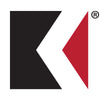Kupa Thumbnails: Chapter 4 - The Do's and Don'ts of E-File Usage
Chapter 4: The Dos and Don’ts of E-file Usage: From repairing cracks to grooming natural nails, these handy machines do a lot and will save you considerable time, thereby increasing your bottom line.
CHAPTER 4:
The Dos and Don’ts of E-File Usage
From repairing cracks to grooming natural nails, these handy machines do a lot and will save you considerable time, thereby increasing your bottom line.
If you haven’t already, you’ll want to incorporate using an electric nail file, also known as an electric nail drill or e-file, into your services. Many techs are intimidated by e-files, but once you get some training and become confident, your e-file will become your new best friend. For comprehensive information on e-file usage, be sure to visit Kupa’s YouTube Channel at www.youtube.com/user/KupaInc
ELECTRIC FILING TECHNIQUES
Using an electric file can help get a client in and out of your salon in no time. Some of the most common things an electric file can be used for are removing lifted acrylic, repairing cracks, prepping for a full set, shaping and finishing acrylic nails or hard gel nails, and doing backfills. Here are some Dos and Don’ts to help simplify your techniques and to care for your e-file.
DO be sure to select proper bits when working near the cuticle area. Make sure the selected bits are applied at the proper angle when attempting to bevel the product safely and flush at the cuticle area. To avoid cutting the clients cuticle or damaging the natural nail plate.
DON’T push too hard, let the e-file do the work. Nail plates are relatively thin, and when techs underestimate the power of an e-file they can go right through the nail plate and cause damage to the nail bed underneath.
DO remember to periodically lift the bit from the nail to prevent heat build-up. To determine how much heat is building up, put your thumb on the hand that is holding the client’s nail and as you work periodically feel the top of the nail. Notice if the nail is hotter on top than underneath, so you’ll be able to lift the bit before your client becomes uncomfortable.
DON’T maneuver the electric file around the nail; angle the client’s hand instead.
DO use a lower speed for the cuticle area. For acrylics, use a medium speed for backfills and refining the concave/convex shape at the tips, and a faster speed on top for shaping. Speeds in excess of 15,000 RPM should be used with caution as they can be potentially dangerous if not using proper technique.
TIP: Keep a firm grip on your client’s fingers. This will eliminate any unnecessary vibrations from the electric file that can cause some discomfort. Proper balancing requires that you use your pinky or ring finger braced against your other hand for balance as you work. This is often referred to as a “fulcrum finger.”
MAINTENANCE DOS AND DON’TS
DO clean the electric file regularly with a soft cloth or brush to remove any dust and debris that can settle in cracks and crevices. Make sure to unplug the machine before cleaning it. Drill bits (carbide or diamond) should first be scrubbed with a brush and soapy water to loosen dust and particles. Disinfect the bits in a disinfecting solution specifically formulated for use with metal instruments. Allow them to air dry thoroughly. Keep bits in a dry, covered container when they’re not in use.
DON’T apply lubricant anywhere on the machine. Most electric files feature bearings inside the handpiece that are self-lubricating. Adding more oil can actually damage the bearings, not to mention heat them up, which causes friction and heats the entire machine. The bearings should be changed every six to 12 months because of dust and loss of lubrication.
DO hold your electric file’s cord properly. Try to avoid constantly bending it, as the cord can become loose from the power supply or the handpiece. Hold the cord at a natural angle.
DON’T place the handpiece in disinfectant. You don’t want to cause interior damage.
DO remove the bit from the handpiece when you’re done using it. Keep a blank bit in the collet when not in use to prevent dust and debris settling into the handpiece. Store the e-file in a clean, dry place, ideally with padding to cushion the handpiece.
DON’T switch your electric file to the reverse option while it’s in forward motion.
DO make sure the bits are centered properly. If not, the electric file stem will wobble and loosen, damaging the handpiece.
DON’T attempt repairs yourself. Instead, ship your e-file in an insured, padded box to the manufacturer for repairs. Don’t ship in a bag or envelope, as the bags tear and not all parts make it to the service center.
DO take care to never drop the handpiece, dropping your handpiece can cause serious damage to your e-file. Be sure to follow all safety precautions provided by the manufacturer.
TIP: Signs of a handpiece in need of repair are strong vibration, bouncing off the nail, and high-pitched whining sounds.
Watch a Kupa Passport unboxing video with Holly Schippers
Kupa TV Host Unveils the MANIPro Passport Limited Edition Teal :
https://www.youtube.com/watch?v=yGrYdvkhQX8&t=127s



Can you use the e-file while it is plugged in?
When would you use reverse or forward? And should you turn it off before going in other direction?
My speed control is not working I can’t adjust low to high it is only running on one speed , what happen?
My nail drill running too noisy can you fix it?
Leave a comment